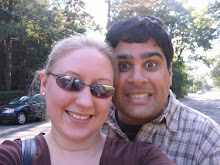Would you believe it...
So for those of you who have been keeping tabs on me, you may have noticed that I have not been absent from my blog for a few weeks. For those select few, I apologize. My Structure of Game Design class decided to drag me out to a field and literally beat my to a bloody pulp with a hammer. The class was the first time we actually had to put together a full blown game. A large amount of the technology was provided for us but I took the challenge and wrote my own systems (however I did not make my own DX interface code). The class overall was extremely challenging and forced me to generate designs at a rapid pace and implement them just as fast. While I've been building a small code base for a while, I had to implement tons of new features in order to get the game logic working. I consider this project a good experiment in what I will need to make a more stable game "engine." I am proud that the collision code, despite spatial partitioning, worked awesome. I was able to get collision-game logic code connected in an extremely short time. I regrettably had to pull all the physics out and use a much simpler "game physics" with some light weight response code but this is proving to be much simpler to work with.
I did find a weakness in myself while working on this project. I am horrible at design. When people gave me suggestions on what I should implement, I was able to solve them and allow for potential new ideas. If anything, my code base provides backbones for lots of game ideas, I just stink at coming up with any! My game demo came out as more of a tech demo showing what could be done or at least proof that the core game play could be created with the code base. I'll need to work on this and try to merge my love of problem solving with an ability to study games "designs." Oy, my engineer side is really taking over.
I am currently taking a break from coding. After turning the project in, I took a day or two off then came back to solve 2 major bugs that were driving me nuts. Now that those are hammered down, I am going to start working on some Memory management research. I want to get to know how new and delete work and find better ways to track one pre-allocated block of memory rather then let it all go hog wild :). This is going to be my "side project" over our Full Sail Summer break which is only a week. I am going with Laura up to her Grandparents for the week. It is going to be a relaxing time and hopefully in those down moments, it will be productive. That reminds me..I need a new notebook!
Now I am wondering if a few of you want to play my "tech demo". Well feel free to download it here.
The game itself is a simply top-down shooter with zombie coming at you from all angles. There is an extra enemy type that chases you and uses the same weapons you have ( a rifle and grenade launcher).
Please drop me a line with what you think.
